The Geekom AS 6 is a really unique device. On one hand, one may think that it is a mini PC that completely surprised us. While many of our readers may not have heard of Geekom, the design was not that of a small mini PC vendor. Instead, Geekom made an AMD Ryzen 7 6800X-based system that is built around an ASUS mini PC platform. It took some time to figure out the “why” of this unit, but then as we went through it, the concept clicked and a segment of our readers will really like this one. Let us get to it.
Geekom AS 6 Overview
Geekom sent us the unit to review. We had a video recorded for this one, but Alex, our editor gave the feedback that the video was not good enough so we are just going to do a web review. In terms of boxes, the Geekom AS 6 was actually a top-quartile design in terms of packages.
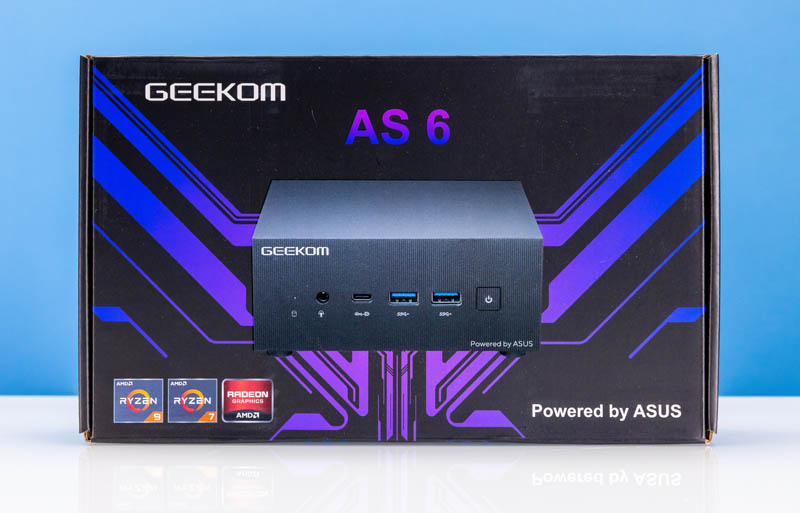
The Geekom AS 6/ AS6 has two variants. This is the AMD Ryzen 9 6900HX edition. There is another Ryzen 7 7735H option which may sound like a generational upgrade, but the 6900HX and 7735H share the same AMD RDNA 2 graphics instead of the RDNA 3 graphics we are seeing on some other mini PCs. From our testing with other systems, these two options are very close in performance which makes sense since the CPU and GPU architecture is the same.
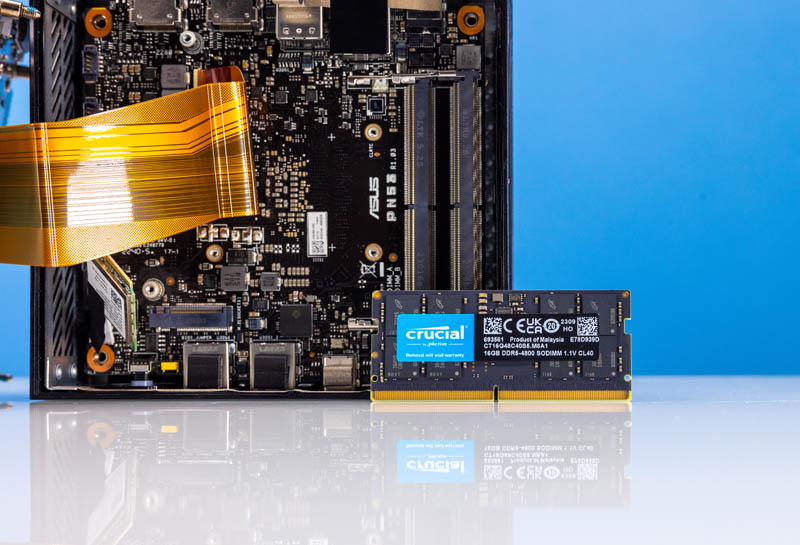
These systems come pre-configured with 32GB of DDR5 memory and a 1TB PCIe Gen4 NVMe SSD. Pricing for these systems is $679-$799. That frankly puts them at the upper end of the mini PC pricing spectrum. At the same time, there is a difference that we cannot overlook. While many may not be familiar with the Geekom brand, the company is doing something different. They are using an ASUS unit as a base for the system. While many comment on not knowing many of the popular mini PC brands today, ASUS is an established global brand. Geekom is also using well-known memory and RAM brands to round out the theme.
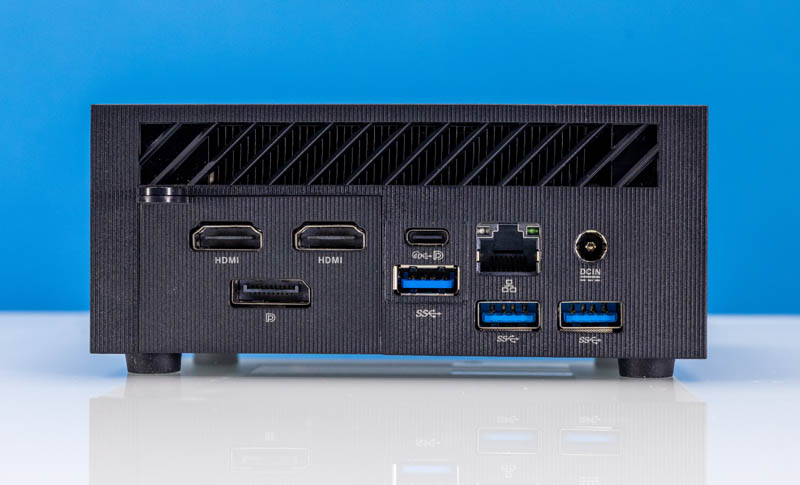
As you will see in our teardown, the AS 6 has something else that is unique because of the ASUS lineage: it is much more complex inside than many mini PCs we see today that aim for the absolute lowest costs.
With that, let us get to the hardware.
Geekom AS 6 Hardware Overview
The front of the Geekom AS 6 shows us a solid I/O panel. Here we have a combo headset audio jack, a USB4 port with alt DisplayPort 1.4 mode, and two USB 3.2 Gen1 5Gbps ports. That is a very solid front I/O set for a modern mini PC.
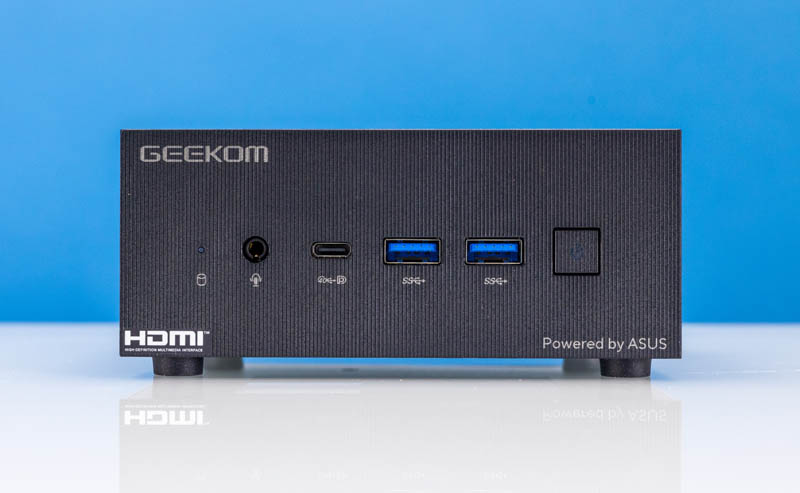
The entire system looks a lot like the ASUS ExpertCenter PN53 which is a fairly stylish design.
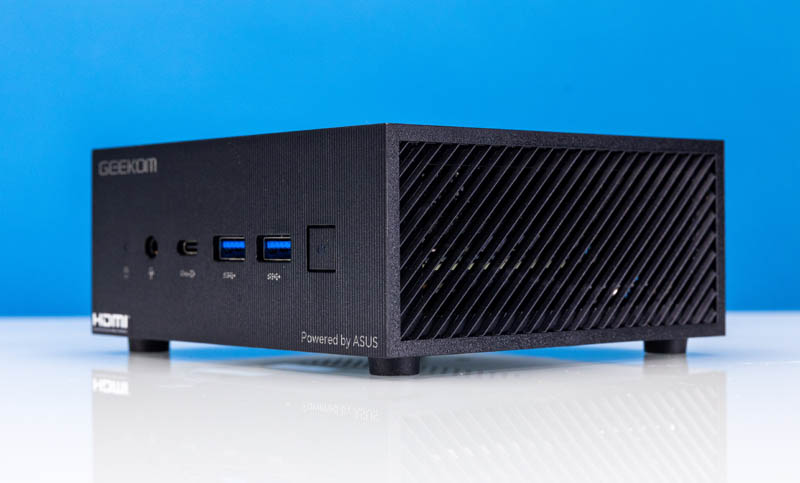
On the side, we get vents. The chassis is a hard plastic. Not flimsy by any means but also not a heavy metal chassis.
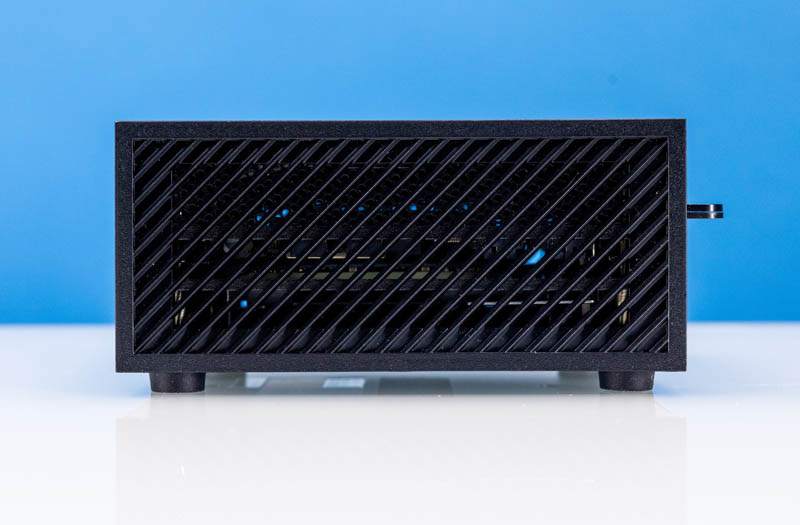
On the other side, we get vents and a Kensington lock port.
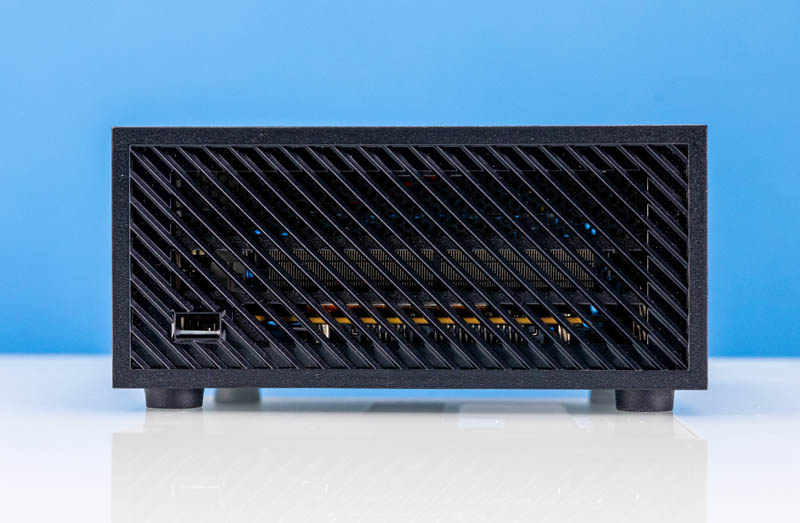
On the rear, things start to get really interesting. There is a standard DC power input and 2.5GbE port. 2.5GbE is a must in this segment now. Display outputs are two HDMI 2.1 ports and one DisplayPort 1.4 port. These display outputs are on the portion of the ASUS base system that is configurable which we will show in our internal overview.

The USB Type-C port is another USB4 port with both alt DisplayPort mode and power delivery input. The other three USB Type-A ports are USB 3.2 Gen1 5Gbps ports. It would have been nice to have two 10Gbps Gen2 Type-A ports as well.
On the bottom of the system, we get a vent and compliance/ certification markings. We also get four rubber feet with screws to open the chassis and get inside.
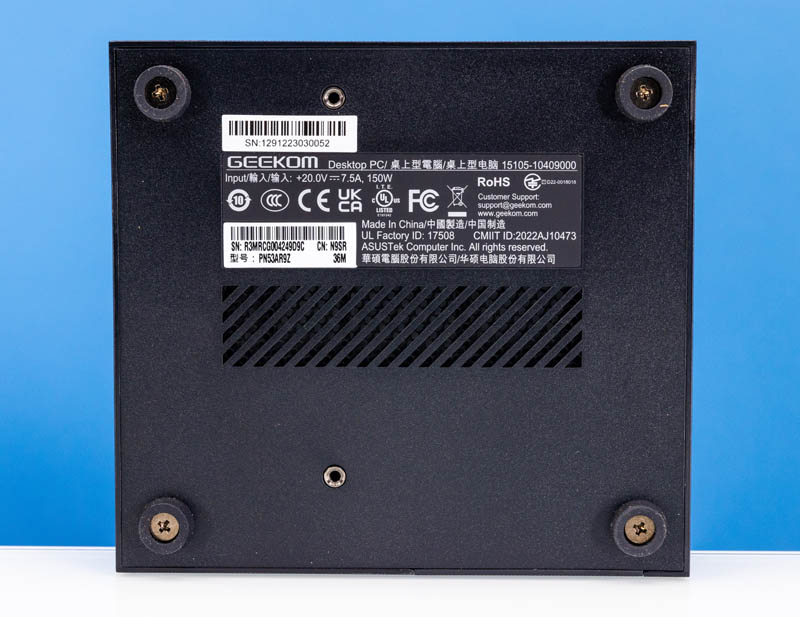
Next, let us get inside the system to see how it is put together.

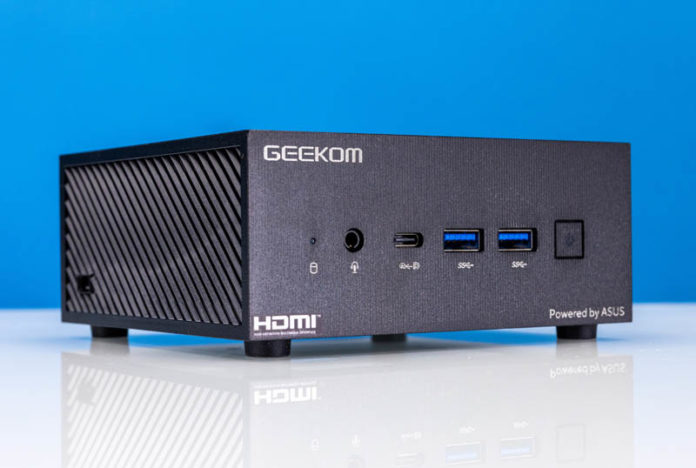



I still don’t get it. You can get a straight ASUS mini for less (or the same, whatever floats your boat, or heck, more), without adding the no name 3rd party that adds….? What? What does buying from them get you that buying from ASUS doesn’t? And how does Geekom, qualify as a known vendor and more than a Topping or Miniswhatever?
Paying the Windows tax? Nope, not for me. I have not done that in ages and will not start doing it again just because some vendor is too lame to offer a “No OS” option.
A name brand like ASUS would be expected to use name brand components and charge appropriately for it…and they do just that in this case.
Using a mini-box like this as a server? A clear description of what STH means by “server” is required before I can comment, but I will like say, “Nope, not for me”.
What I would really be interested in seeing is a mini-box that is like 1 step up from a Raspberry Pi and based on x86. The RPi is useful in some applications, but it’s lack of availability has been a pain in the back side. All of the promises of “supply chain improvement” were torpedoed, in my opinion, when RPi stated they were focusing heavily on their “business orders”. I guess peon little guy customers a meaningless to them now that they wear Big Boy Pants thanks to their boards that are used worldwide?
Some “not-really-name-brand” mini x86 devices & boards (a step below this ASUS product) come from overseas companies and incur “overseas pricing” due to support & warranty hassles, exchange rates, import duties, shipping costs, and so on. That makes purchasing a Mini-ITX board (which is the next step up) from a local retailer (online or otherwise) actually look affordable, even when you add in the necessary bits to make it useful. Even that oddball sized mini-STX format looks kinda sorta reasonable to me, and it comes in a “No OS” option too!
In response to “The RPi is useful in some applications, but it’s lack of availability has been a pain in the back side,” it would appear that the shortage of Pi 4B computers is essentially over. Whether these make any more or less of server than a Geekom is not clear.
For me server hardware needs some sort of remote management capability. While the Pi already has a few configuration settings stored in its firmware, I suspect the Geekom firmware has many setup screens. Is it possible to change these settings without connecting a monitor? Wake on LAN is just not the same as IPMI, though POE can be a little more helpful when things go wrong.
The other feature I expect on a server is the ability to monitor ECC errors. On an x86 system this would be provided by ECC DIMMs. The on-die ECC RAM in a 4B or on a DDR5 DIMM is not quite the same thing. Is it possible to query a RAM chip with on-die ECC to obtain it’s error detection and correction rates?
Also, how do you mount a Geekom in a standard data center rack? There are actually solutions to mount a bunch of Pi computers in a 19″ rack, but I’ve not seen anything for mini x86 systems. Do people just put them on a shelf?
There are two more things for a home lab that I find important: repairability and price. The Pi is cheap. A typical setup consists of a POE board and the system board. Repairability of the system board is impossible, but if it breaks one doesn’t have to replace the POE hardware and vice versa. The Geekom is too expensive to consider not repairing. Are spare motherboards available? If even a fan gives out, are replacements easily found?
“Power consumption & Noise” and yet not a word is said about noise? Did I miss something here?
FWIW, you can fit ECC RAM in the PN53 according to the ASUS release notes…
PILISA
Asus is not a brand I would buy for anything with a motherboard at the moment or (near) future. And the warranty is still done by a “unknown” brand.
Better buy a barebone um790 and add brand components that are fast. With a newer igpu with longer driver support.